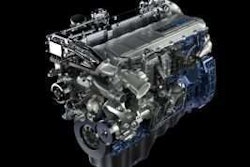Many dealers think their service department is running okay, but they are comparing current results to history. A quick review of three profit benchmarks and a few easy calculations can allow you to compare your performance to some of the best-run shops.
There is more to running a service department than profits. All attempts to improve performance should also be focused on your level of service to your customers.
While that may seem contradictory, at KEA Advisors, we believe the same best practices and processes that produce long-term profits also will encourage development of enthusiastic, loyal customers. If you think about it, when you answer a customer’s call in a quick and courteous manner, when you provide an appointment that is convenient, when you write the customer up quickly and efficiently on your service drive, quote competitive prices, fix the vehicle right the first time and deliver the truck back to customer when promised, you are ‘average’ in the customer’s eyes. You did what the customer expected when they chose to do business at your shop.
Solid customer driven processes, consistently delivered by your employees, will allow you to exceed customer’s expectations. Exceeding expectations will build loyal, enthusiastic customers. Enthusiastic customers ensure peak profitability.
First, let’s review the three service efficiency benchmarks:
• Overall technician proficiency at or above 95 percent
• Labor gross profit at or above 75 percent
• Customer effective labor rate at or above your warranty labor rate
When measuring performance the following information will be helpful.
1. Overall technician proficiency is calculated by dividing total sold or flat-rate hours (FRH) produced by the total clock hours worked. If you are below the benchmark you might want to examine two areas for possible opportunities.
First, although it is tough to measure, observe the amount of time your technicians spend in their bay working on trucks. Do they often wait for customer’s authorizations, parts, and repair instructions? Do they take timely breaks? How much time is spent on the tool truck or the lunch wagon when they arrive?
Managing the time the technician is in the bay working on trucks is most often, the biggest opportunity for improvement.
2. Labor Gross Profit is available on most financial statements. Be sure to calculate total labor only gross profit. If your financial statement includes an account for unapplied time or an adjustment to the labor gross profit accounts, it will be necessary to subtract this cost from the total labor gross profit before you calculate your performance.
If your performance is low, there are only two areas to address to resolve this issue. The first is managing your effective labor rate, which we will discuss in item three below. The second is managing your cost per FRH produced. While the biggest gains in gross profit are usually achieved by managing the effective labor rate there are significant gains possible in managing your cost.
Start by reviewing your technician pay rates. If you pay hourly or offer a guarantee to some or all of your technicians you may want to measure individual proficiency. Low proficiency with these types of pay plans can drastically affect your cost per hour produced. If this is the case, you don’t have to change the pay plan. But, you need to spend time managing proficiency (see above). If you pay per FRH, review your technician’s skill levels and rates of pay. Often we find that shops pay all their technicians a standard or uniform rate.
If you examine each technician’s abilities and specific proficiency you may find some technicians are worth more than others.
Most service departments provide their customers with a broad mix of maintenance and repairs, each with different skills necessary by the assigned technician. All jobs do not require an “A” technician. Consequently, we recommend you utilize multi-level flat rate pay systems. Another way to state this is to base pay on ability and assign each repair job based on that ability.
These actions take time for improvement. We are not recommending that you change an individual’s rate of pay. Over time, due to attrition, turn over and growth, application of these principles will have a positive effect on your profitability.
3. Your customer effective labor rate often can be accessed from your computer system. If not, you can easily measure it from a sample of customer pay repair orders.
Note: the minimum sample size should equal one week’s business. If you add all of the labor dollars charged and divide it by the number of FRH’s (sold hours) flagged on those repair orders, the result is your weighted average labor rate, or customer effective labor rate.
Your target should equal your door rate and/or warranty rate. This sample should include all types of work, even discounted specials. You may find your result is less than your door rate. This is caused by special pricing and discounts. For example, if you calculate your labor rate for a PM, it is most likely less than your target rate.
Obviously, a good service manager will provide competitive prices for all highly visible repairs, or those repairs, which most shops advertise in your market. As we discussed above, we believe there are different types of work and different skills necessary to perform this work. Your competition can offer reduced prices for certain repairs because they can turn away tough repairs, which require special training and special tools or equipment. They may not need any “A” technicians.
Customers typically perceive a dealership as being overpriced. One way to combat this perception is to be competitive on highly visible repairs in your market. But, the effect is, it lowers your effective labor rate.
There are three types of repairs in your shop. We define them as competitive, maintenance and repair. Those competitive jobs need to be priced close to your competition. You may not choose to be the cheapest, but you must be competitive.
Typically these include preventive maintenance specials, AC specials, DOT Inspections and possibly brake jobs. Maintenance jobs include factory recommended maintenance packages, brakes, hoses, belts, shocks and exhaust work. The repair category includes jobs that typically are necessary because something broke. They often require diagnosis, special training and special tools. These are the type of jobs that cause you to need those “A” technicians.
If you think about it in these terms it makes sense to have three labor rates. We can discount to be competitive, charge our door rate for maintenance and maybe charge a higher rate for the repair rate.
We always structure variable labor rates based on a dealer’s specific market. These rates need to be “market driven.” If you chose to use variable labor rates, conduct an extensive market survey for the three types of repairs, structure your rates, and before you begin using them, be sure to adequately train your service advisors.
For example, using total job pricing can help when using variable labor rates. Customers really do not want to know flat rate times and labor rates. They do want to know: What is wrong? How much? When can I have it back?
If your new process includes total job pricing and market driven variable labor rates, you can achieve the target effective labor needed to improve your gross profit.
I know if you take the time to measure performance, compare it to these benchmarks and together with your management team develop processes that are customer focused and structurally sound, you can achieve more profit and have happy customers.
Good Luck.
Mark Martincic is a professional adviser for KEA Advisors. He has more than 20 years of dealership advisory experience. He can be reached at [email protected].







